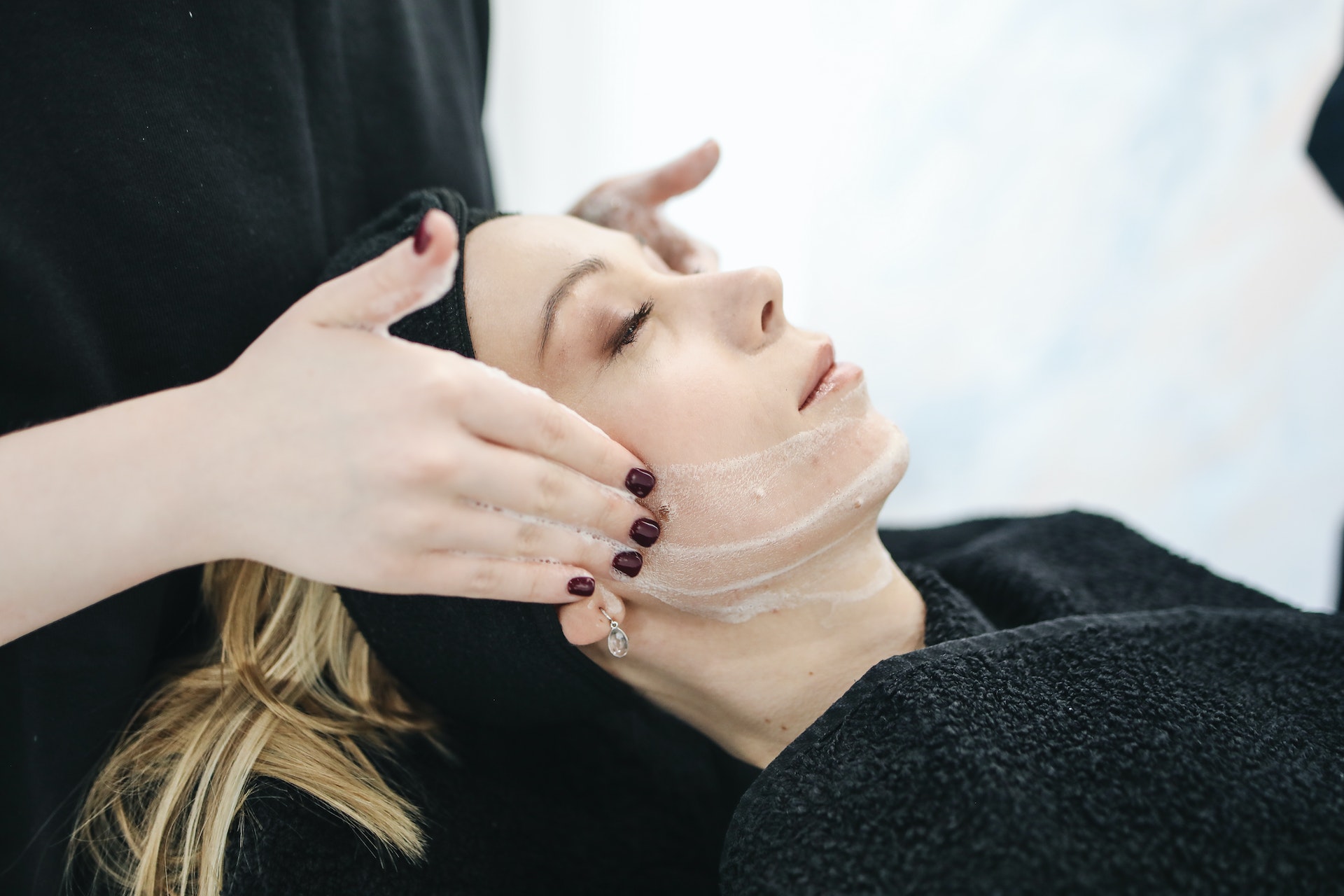Healthy Skin Tips for Face
Having healthy, radiant skin is not just about vanity; it’s a reflection of our overall well-being. Our face, being the most visible part of our body, plays a crucial role in our self-confidence and how we present ourselves to the world. That’s why it’s essential to prioritize a healthy skincare routine specifically tailored to the needs of our face.
A well-maintained facial skincare routine goes beyond just using a few products now and then. It requires understanding our skin type, knowing the right techniques, and incorporating healthy habits into our daily lives. The good news is that achieving and maintaining healthy skin is within reach for everyone.
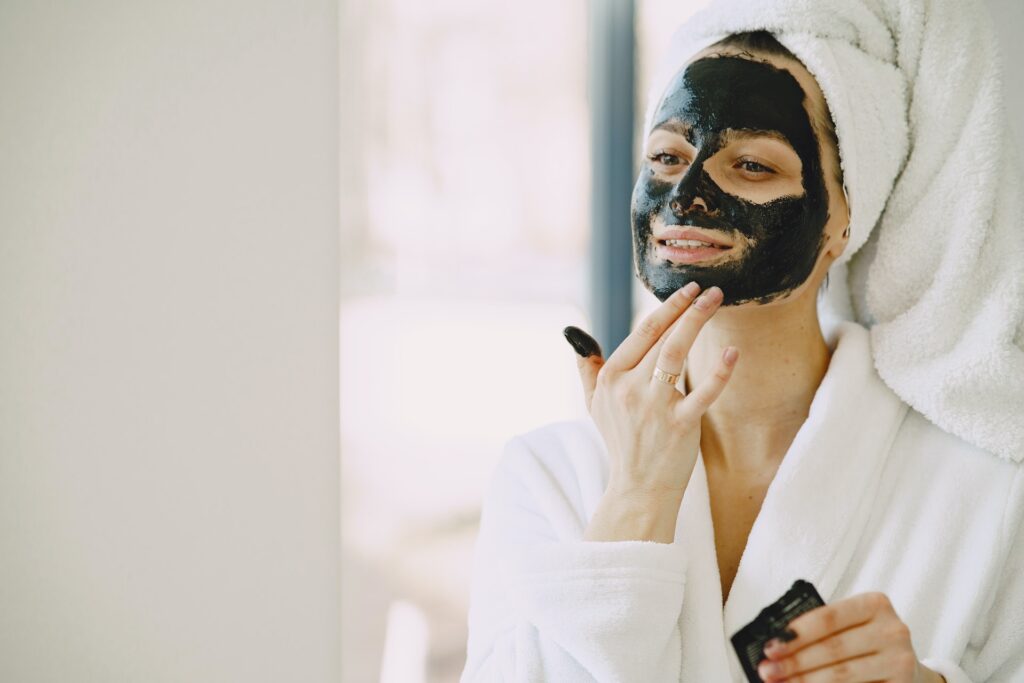
Understanding Your Skin Type
To embark on a successful skincare journey, it’s crucial to understand your unique skin type. Each person’s skin is different, and catering to its specific needs is essential for achieving optimal results. Here are the five main skin types and how they affect your skincare routine:
Normal Skin
Normal skin is characterized by balanced sebum production, minimal imperfections, and a smooth texture. If you have normal skin, consider yourself fortunate! Your goal should be to maintain its natural equilibrium by focusing on hydration, protection, and preventive measures.
Tips for Normal Skin
- Use a gentle cleanser to remove impurities without stripping away natural oils.
- Moisturize daily to maintain hydration levels.
- Protect your skin from sun damage with broad-spectrum sunscreen.
Dry Skin
Dry skin tends to lack moisture and may feel tight, rough, or even flaky. It requires extra care to replenish and retain hydration levels.
Tips for Dry Skin
- Opt for a mild, hydrating cleanser that doesn’t strip away natural oils.
- Moisturize generously with a rich, emollient moisturizer to lock in moisture.
- Consider incorporating a hydrating serum or facial oil into your routine.
- Limit hot showers and use lukewarm water to prevent further drying of the skin.
Oily Skin
Oily skin is characterized by an excess production of sebum, leading to a shiny complexion and often accompanied by enlarged pores and a predisposition to acne and breakouts.
Tips for Oily Skin
- Use a gentle, oil-free cleanser to remove excess oil and impurities.
- Look for lightweight, non-comedogenic moisturizers to provide hydration without clogging pores.
- Use products with ingredients like salicylic acid or tea tree oil to control oil production and prevent breakouts.
- Avoid overwashing or scrubbing, as it can stimulate more oil production.
Combination Skin
Combination skin is a blend of different skin types, with some areas being oily (usually the T-zone, which includes the forehead, nose, and chin) and other areas being normal or dry (such as the cheeks).
Tips for Combination Skin
- Use a gentle cleanser that doesn’t overly dry out your skin or leave it feeling greasy.
- Consider using different products for different areas of your face to address specific concerns.
- Apply a lightweight, oil-free moisturizer to the dry areas and a mattifying product on the oily zones.
- Exfoliate regularly to remove dead skin cells and unclog pores.
Sensitive Skin
Sensitive skin is easily irritated and prone to redness, itching, or a stinging sensation. It requires gentle, soothing care to minimize reactions.
Tips for Sensitive Skin
- Look for fragrance-free, hypoallergenic products formulated specifically for sensitive skin.
- Use a gentle cleanser that doesn’t contain harsh ingredients or irritants.
- Opt for fragrance-free and alcohol-free moisturizers to minimize sensitivity.
- Perform patch tests before trying new products to check for adverse reactions.
Understanding your skin type allows you to make informed choices when selecting skincare products and tailoring your routine accordingly. If you’re unsure about your skin type or have persistent skin concerns, consulting a dermatologist can provide personalized insights and recommendations.
Remember, each skin type has its own unique needs, and embracing your skin’s individuality is key to achieving a healthy, glowing complexion.
Cleansing
Cleansing is the foundation of any effective skincare routine. It helps remove dirt, impurities, excess oil, and residual makeup, allowing your skin to breathe and absorb subsequent skincare products more effectively. Here’s a breakdown of how to cleanse your face properly:
Choose the Right Cleanser:
Selecting the right cleanser for your skin type is essential. Look for a gentle, pH-balanced cleanser that doesn’t strip away the skin’s natural oils. Avoid harsh cleansers that can cause dryness or irritation. Here are some options based on different skin types:
- Normal Skin: A mild, hydrating cleanser is suitable for normal skin.
- Dry Skin: Opt for a creamy or lotion-based cleanser to add moisture while cleansing.
- Oily Skin: Look for a foaming or gel-based cleanser that helps control excess oil.
- Combination Skin: Use a gentle cleanser that addresses both oily and dry areas of your face.
- Sensitive Skin: Choose a fragrance-free, gentle cleanser designed for sensitive skin.
Cleanse Twice a Day:
It’s important to cleanse your face twice a day to maintain a clean and fresh complexion. Cleanse once in the morning to remove any impurities that have accumulated overnight, and cleanse again in the evening to remove makeup, dirt, and pollutants from the day.
Start with Warm Water:
Before applying your cleanser, rinse your face with warm water. The warm water helps open up your pores, allowing the cleanser to penetrate more deeply.
Apply the Cleanser:
Take a small amount of cleanser and gently massage it onto your damp face using circular motions. Pay attention to areas prone to oiliness or congestion, such as the T-zone (forehead, nose, and chin). Avoid scrubbing too harshly, as it can irritate the skin.
Rinse Thoroughly:
After massaging the cleanser onto your face, rinse it off thoroughly with lukewarm water. Ensure that no residue is left behind, as it can clog pores and cause skin issues.
Pat Dry and Follow with Toner:
Gently pat your face dry with a clean, soft towel. Avoid rubbing, as it can irritate the skin. After cleansing, consider using a toner to rebalance the skin’s pH levels and prepare it for the next steps of your skincare routine.
Avoid Over-cleansing:
While it’s essential to keep your skin clean, over-cleansing can strip away the skin’s natural oils, leading to dryness and potential irritation. Stick to the recommended twice-daily cleansing routine unless advised otherwise by a dermatologist.
Remember, cleansing is the first step towards healthy skin, and it sets the stage for the effectiveness of other skincare products. By following a gentle and consistent cleansing routine, you can ensure that your skin is clean, refreshed, and ready to absorb the benefits of the subsequent steps in your skincare regimen.
Moisturizing
Moisturizing is a vital step in any skincare routine, regardless of your skin type. It helps hydrate the skin, improve its texture, and create a protective barrier against external aggressors. Here’s how to effectively moisturize your face:
Choose the Right Moisturizer:
Selecting a moisturizer that suits your skin type is crucial. Look for a product that is lightweight, non-comedogenic (won’t clog pores), and designed for your specific skin concerns. Here are some tips based on different skin types:
- Normal Skin: Opt for a moisturizer that provides balanced hydration without feeling heavy on the skin.
- Dry Skin: Look for a moisturizer that is rich in emollients and contains ingredients like hyaluronic acid or ceramides to lock in moisture.
- Oily Skin: Choose a lightweight, oil-free moisturizer or a gel-based moisturizer that hydrates without adding excess oil.
- Combination Skin: Use a moisturizer that addresses both oily and dry areas of your face. Consider using different moisturizers for different areas if needed.
- Sensitive Skin: Look for a fragrance-free, hypoallergenic moisturizer that soothes and nourishes without causing irritation.
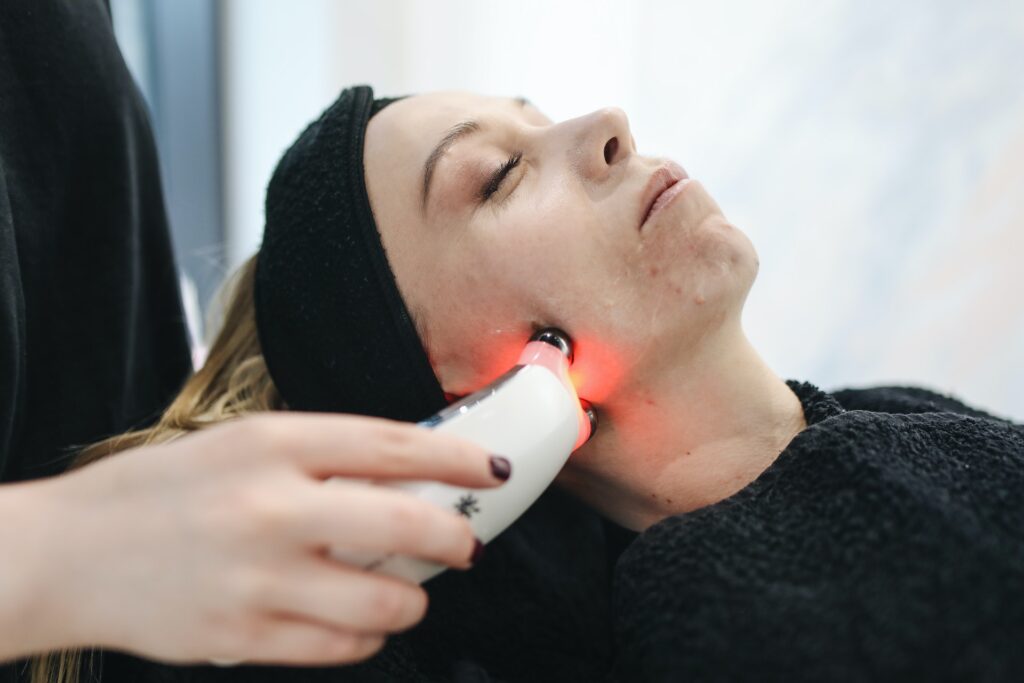
Apply Moisturizer to Clean Skin:
After cleansing your face, apply a small amount of moisturizer to your fingertips. Gently massage it onto your face using upward motions, ensuring even coverage. Pay attention to areas that tend to be drier, such as the cheeks and forehead.
Don’t Forget the Neck and Decolletage:
Extend your moisturizing routine to your neck and decolletage as well. These areas are often overlooked but are prone to signs of aging and dryness. Apply the moisturizer in upward strokes to help improve the skin’s elasticity.
Consider Additional Moisturizing Steps:
If your skin needs an extra boost of hydration, consider incorporating the following steps:
- Hydrating Serums:
Layer a hydrating serum with ingredients like hyaluronic acid or glycerin before applying your moisturizer. This helps to lock in moisture and provide deeper hydration. - Facial Oils:
If your skin is dry or dehydrated, adding a few drops of facial oil, such as jojoba oil or rosehip oil, to your moisturizer can provide added nourishment and hydration. - Overnight Masks:
Once or twice a week, consider using an overnight moisturizing mask to provide intense hydration while you sleep. - Apply Sunscreen:
After moisturizing, it’s essential to apply a broad-spectrum sunscreen with an appropriate SPF to protect your skin from harmful UV rays. Sunscreen not only prevents sunburn but also helps maintain the skin’s moisture levels and prevents premature aging.
- After moisturizing, it’s essential to apply a broad-spectrum sunscreen with an appropriate SPF to protect your skin from harmful UV rays. Sunscreen not only prevents sunburn but also helps maintain the skin’s moisture levels and prevents premature aging.
Moisturize Regularly:
To keep your skin properly hydrated, make moisturizing a part of your daily skincare routine. Apply moisturizer in the morning and evening, and reapply as needed throughout the day, especially if you have dry or dehydrated skin.
Moisturizing is an essential step in achieving and maintaining healthy, supple skin. By selecting the right moisturizer for your skin type and incorporating it into your routine consistently, you can nourish and protect your skin, resulting in a radiant and youthful complexion.
Sun Protection
Protecting your face from the sun’s harmful UV rays is crucial for maintaining healthy skin and preventing sun damage. Exposure to the sun without proper protection can lead to premature aging, wrinkles, sunspots, and an increased risk of skin cancer. Here’s how to effectively protect your face from the sun:
- Wear Broad-Spectrum Sunscreen:
Choose a broad-spectrum sunscreen that protects against both UVA and UVB rays. Look for a sunscreen with a sun protection factor (SPF) of 30 or higher. Apply it generously to your face, neck, and any other exposed areas of skin. Reapply every two hours, or more frequently if you’re sweating or swimming. - Use the Right Amount of Sunscreen:
Apply an adequate amount of sunscreen to ensure proper coverage and protection. As a general guideline, use about a nickel-sized amount (approximately 1/4 teaspoon) for your face. Adjust the amount accordingly if you have a larger or smaller face. - Don’t Forget Your Lips:
Apply a lip balm or lipstick that contains SPF to protect your lips from sun damage. The skin on your lips is delicate and can be easily damaged by the sun’s rays. - Seek Shade:
Whenever possible, seek shade, especially during the peak hours of sun intensity, typically between 10 a.m. and 4 p.m. This reduces direct exposure to the sun and decreases the risk of sunburn and skin damage. - Wear Protective Clothing and Accessories:
Cover your face with a wide-brimmed hat that shades your face, ears, and neck. Wear sunglasses with UV protection to shield your eyes and the delicate skin around them. Additionally, consider wearing lightweight, long-sleeved shirts and pants made of sun-protective fabric. - Limit Tanning:
Avoid intentional tanning, whether through sunbathing or indoor tanning beds. Tanning may temporarily give your skin a desired glow, but it significantly increases the risk of skin damage and premature aging. Embrace and celebrate your natural skin tone instead. - Check the UV Index:
Be aware of the UV index in your area. The UV index provides information about the strength of the sun’s rays on a given day. Plan outdoor activities accordingly and take extra precautions on days when the UV index is high. - Practice Sun Safety Year-Round:
UV rays can be harmful even on cloudy or overcast days and during winter months. Make sun protection a year-round habit, regardless of the weather conditions or the season.
Remember, protecting your face from the sun’s rays is an essential part of maintaining healthy skin. By incorporating these sun protection practices into your daily routine, you can minimize the risk of sun damage and keep your skin looking youthful and radiant for years to come.
Healthy Lifestyle Habits
In addition to a consistent skincare routine, adopting healthy lifestyle habits can greatly contribute to the overall health and appearance of your skin. Here are some essential lifestyle habits to promote a healthy complexion:
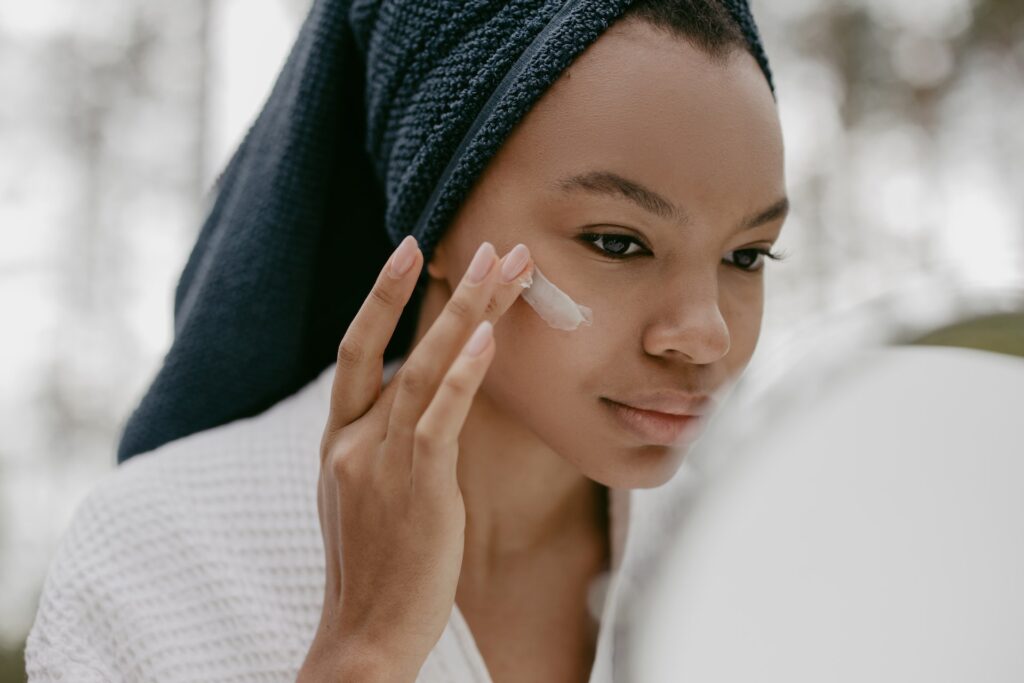
- Stay Hydrated:
Drinking an adequate amount of water each day is vital for maintaining healthy skin. Proper hydration helps keep your skin moisturized, supports its natural functions, and promotes a radiant complexion. Aim to drink at least 8 glasses (64 ounces) of water per day, or more if you are physically active or in hot weather. - Follow a Balanced Diet:
A nutritious diet can have a profound impact on your skin’s health. Include plenty of fruits, vegetables, whole grains, lean proteins, and healthy fats in your meals. These foods provide essential vitamins, minerals, antioxidants, and omega-3 fatty acids, which can help nourish your skin from within. - Get Sufficient Sleep:
Adequate sleep is crucial for healthy skin. During sleep, your body repairs and regenerates cells, including skin cells. Lack of sleep can lead to a dull complexion, dark circles, and increased signs of aging. Strive for 7-9 hours of quality sleep each night to allow your skin to rejuvenate. - Manage Stress:
Chronic stress can take a toll on your skin’s health, leading to breakouts, dullness, and inflammation. Find healthy ways to manage stress, such as practicing relaxation techniques (e.g., deep breathing, meditation, yoga), engaging in hobbies, spending time in nature, or seeking support from loved ones. Taking care of your mental and emotional well-being can positively impact your skin. - Exercise Regularly:
Engaging in regular physical activity promotes healthy circulation, which delivers oxygen and nutrients to your skin. Exercise also helps reduce stress and supports detoxification processes. Aim for at least 30 minutes of moderate-intensity exercise, such as brisk walking, jogging, cycling, or dancing, most days of the week. - Protect Yourself from Environmental Factors:
Besides protecting your skin from the sun, it’s important to minimize exposure to other environmental factors that can harm your skin. Avoid smoking, as it accelerates aging and contributes to wrinkles. Limit your exposure to harsh weather conditions, pollution, and secondhand smoke, which can all have detrimental effects on the skin. - Avoid Excessive Alcohol and Caffeine:
Excessive alcohol and caffeine consumption can dehydrate your skin and lead to inflammation. While moderate consumption is generally fine, excessive intake can disrupt your skin’s balance. Opt for water, herbal teas, and fresh juices as hydrating alternatives. - Practice Gentle Handling of Your Skin:
Treat your skin with care to avoid unnecessary damage. Avoid aggressive scrubbing, picking at blemishes, or using harsh, abrasive skincare products. Opt for gentle cleansers, soft towels, and light patting motions when drying your face.
By incorporating these healthy lifestyle habits into your daily routine, you can enhance the health and appearance of your skin. Remember, healthy skin is a reflection of your overall well-being, so prioritize self-care and embrace a balanced, holistic approach to skincare.
Skincare Do’s and Don’ts
To help you navigate the world of skincare effectively, here are some important do’s and don’ts to keep in mind:
- Do’s:
Patch Test New Products Before incorporating a new skincare product into your routine, it’s wise to perform a patch test. Apply a small amount of the product to a discreet area of your skin, such as the inner wrist or behind the ear. Monitor the area for 24-48 hours to check for any adverse reactions or allergies. - Don’t:
Overload Your Skin with Products While it’s tempting to try every new skincare product on the market, overloading your skin with too many products can do more harm than good. Stick to a core set of essential products and introduce new ones gradually to ensure they work well with your skin without causing irritation or congestion. - Do’s:
Protect Your Skin from the Sun Sun protection is non-negotiable. Always apply a broad-spectrum sunscreen with at least SPF 30 before sun exposure, regardless of the weather or season. Reapply every two hours and seek shade during peak sun hours. - Don’t:
Forget to Cleanse Your Face Before Bed No matter how tired you are, never skip cleansing your face before bed. Leaving makeup, dirt, and pollutants on your skin overnight can lead to clogged pores, breakouts, and dullness. Make it a habit to cleanse your face thoroughly every evening. - Do’s:
Remove Makeup Properly Ensure you remove your makeup gently and thoroughly at the end of the day. Use a makeup remover or cleansing oil to dissolve makeup, followed by a gentle cleanser to clean your skin. Leaving traces of makeup can lead to congestion and skin issues. - Don’t:
Touch Your Face Frequently Avoid touching your face throughout the day, as your hands can harbor bacteria and dirt that can transfer to your skin, leading to breakouts and infections. Be mindful of this habit and resist the urge to touch your face unnecessarily. - Do’s:
Hydrate Your Skin from Within Healthy Skin starts from the inside out. Stay hydrated by drinking an adequate amount of water throughout the day. Proper hydration helps maintain skin elasticity, flushes out toxins, and promotes a radiant complexion. - Don’t:
Exfoliate Too Often Exfoliation is beneficial for removing dead skin cells and revealing a fresh complexion. However, over-exfoliating can cause irritation and disrupt the skin’s natural barrier. Limit exfoliation to 1-2 times a week, depending on your skin’s tolerance and the type of exfoliator you’re using. - Do’s:
Practice Consistency Consistency is key when it comes to skincare. Stick to a regular routine and give your skin time to adjust to new products or treatments. It takes time to see results, so be patient and stay committed to your skincare regimen. - Don’t:
Neglect Other Areas of Your Body Remember that skincare isn’t limited to your face. Extend your skincare routine to other areas of your body that may need attention, such as your neck, chest, hands, and feet. Moisturize and protect these areas to maintain overall skin health.
By following these skincare dos and don’ts, you can establish a healthy and effective skincare routine that nurtures and enhances the natural beauty of your skin. Remember to listen to your skin’s needs, be mindful of your habits, and seek professional advice when necessary.
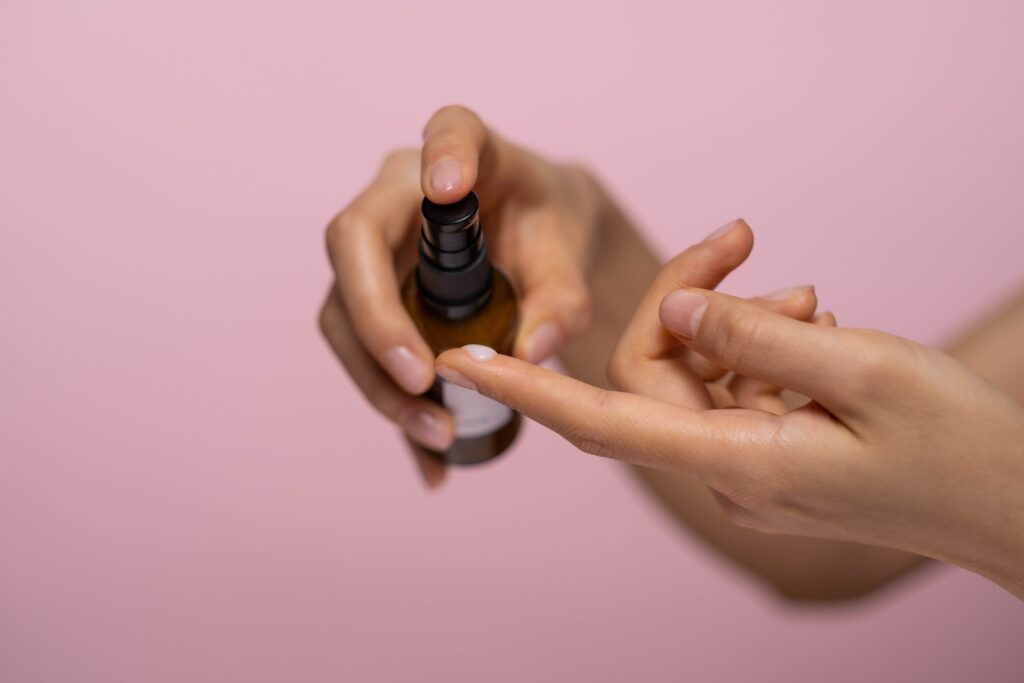
Conclusion
In conclusion, achieving and maintaining healthy skin requires a combination of a consistent skincare routine and adopting healthy lifestyle habits. By following the tips outlined in this article, you can take proactive steps to promote a glowing, youthful complexion.
May 23, 2023 4 comments

